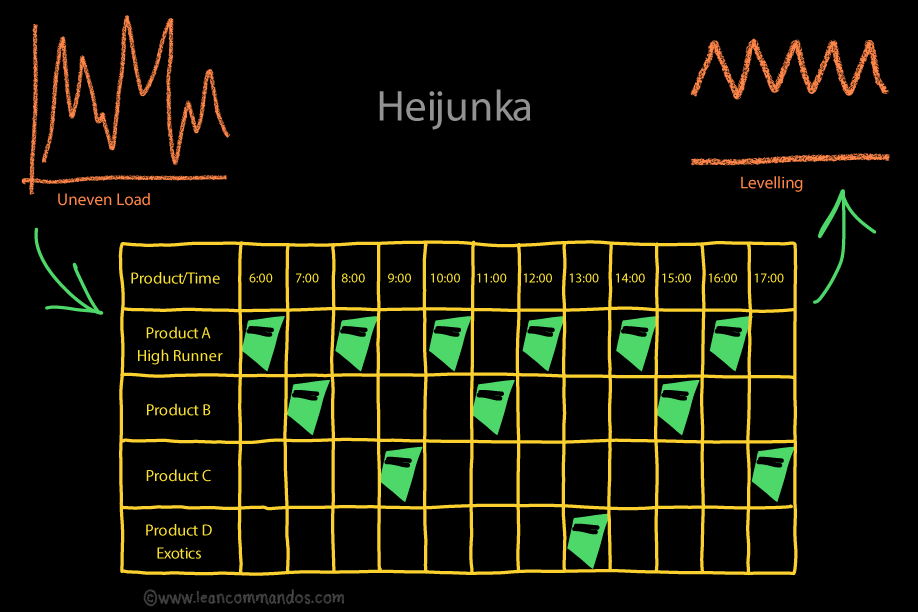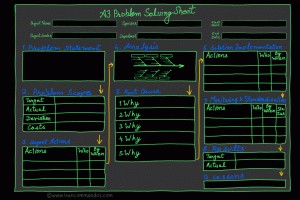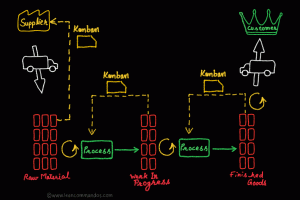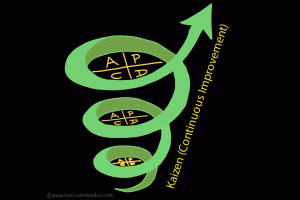Introduction
In the pursuit of operational excellence, Heijunka, or production leveling, stands as a cornerstone in the realm of Lean management. It represents the balanced and rhythmic flow of production, eliminating the peaks and troughs that characterize traditional manufacturing. This strategic tool ensures a consistent and predictable production stream, enhancing efficiency and establishing harmony on the factory floor.
History and Development
Heijunka emerged from the Toyota Production System (TPS), a methodology that revolutionized the automotive industry in the mid-20th century. Developed to combat the inefficiencies of mass production, it responded to the need for a system that could accommodate customer demands without the burden of excess inventory or wasted resources.
Key Principles
At its core, Heijunka is guided by the principles of waste reduction, just-in-time manufacturing, and respect for people. It aims to distribute production evenly by volume and variety over time, smoothing out the workload and avoiding batch processing.
When to Use the Tool
Heijunka is particularly beneficial in environments characterized by fluctuating demand and product variety. It is used when an organization seeks to minimize lead times, reduce inventory levels, and improve customer response times, all while maintaining quality and worker morale.

How It Works
Implementing Heijunka embodies a meticulous process aimed at aligning production with demand fluctuations to achieve operational excellence. The methodology encompasses several crucial steps, each contributing to the creation of a harmonized and efficient production environment.
Firstly, the journey commences with a comprehensive analysis of demand patterns. This stage involves delving into customer orders to discern the intricacies of demand for various products. Understanding these patterns is pivotal as it forms the foundation upon which the production schedule will be built.
Following demand analysis, the next imperative step is assessing production capacity. This involves gauging the total production capacity available while identifying any potential constraints that could impede the smooth flow of production. By acknowledging and addressing these constraints upfront, organizations can proactively strategize to mitigate potential bottlenecks
Once demand and capacity are comprehensively understood, the focus shifts to lot sizing. Unlike traditional manufacturing approaches that often entail large batch productions of a single product, Heijunka advocates for breaking down production into smaller, more manageable lots. These lots are strategically designed to encompass a mix of different products, thereby fostering flexibility and adaptability within the production process.
Sequence planning emerges as another critical component of Heijunka implementation. It involves developing a meticulously crafted sequence dictating the order in which products are manufactured. By orchestrating a seamless transition between different product types, organizations can optimize workflow efficiency and minimize disruptions.
Central to the Heijunka methodology is the utilization of visual scheduling tools, notably the Heijunka box. This visual aid serves as a tangible representation of the production schedule, with each slot in the box corresponding to a specific time period. Production orders are depicted through cards within these slots, offering a clear and intuitive overview of the production plan. The Heijunka box facilitates effective communication and coordination, enabling stakeholders to visualize and comprehend the production schedule at a glance.
The culmination of these steps culminates in the transformation of erratic customer demands into a consistent and steady production flow. Heijunka empowers organizations to swiftly adapt to changes in demand dynamics while maintaining operational stability. Furthermore, by providing workers with a predictable and balanced workload, Heijunka cultivates a conducive work environment conducive to employee engagement and morale
In essence, the implementation of Heijunka epitomizes a systematic and holistic approach to production leveling, underpinned by a deep understanding of demand dynamics, production capacity, and workflow optimization. By adhering to its principles and leveraging visual management tools, organizations can navigate the complexities of modern manufacturing landscapes with confidence and precision
Benefits
The strategic application of Heijunka leads to a myriad of benefits: a steadfast flow of goods to customers, a reduction in the need for excess inventory, improved lead times, and the empowerment of a more flexible workforce capable of handling multiple tasks.

Case Study
A prominent example of Heijunka in action can be seen in Toyota’s automobile manufacturing process. Facing a diverse demand for different car models, Toyota adopted Heijunka to ensure that each model was produced in alignment with actual market demand, rather than in large batches. This leveling allowed Toyota to reduce lead times and inventory costs significantly, while increasing customer satisfaction by providing faster delivery times.
Common Mistakes and Pitfalls
- Overproduction: One common mistake is producing more than the demand, leading to excess inventory.
- Inadequate Workload Distribution: Failing to evenly distribute the workload can overburden workers and machinery, leading to burnout and increased maintenance.
- Neglecting Variability: Not accounting for variability in customer demand can undermine the leveling process.
- Poor Communication: Ineffective communication of the production plan can lead to confusion and inefficiency on the production floor.
- Rigidity: Being too rigid in the implementation can prevent the necessary flexibility required to respond to changes in demand.
Tips for Success
- Start Small: Begin with a pilot area before implementing Heijunka across the entire production floor.
- Employee Involvement: Engage employees in planning and execution for better acceptance and understanding.
- Continuous Improvement: Regularly review and adjust the leveling plan to align with changing demands.
- Visual Management: Use visual tools like the Heijunka box for clear communication of the production schedule.
Integration With Other Lean Tools
Heijunka seamlessly integrates with other Lean tools such as Kanban for inventory control, Kaizen for continuous improvement, and Total Productive Maintenance for equipment efficiency
FAQs
What distinguishes Heijunka from traditional scheduling?
Heijunka levels the production by volume and variety over time, unlike traditional scheduling, which often results in batch processing and fluctuating workloads.
Can Heijunka be applied to services?
Yes, Heijunka principles can be adapted to service industries by leveling the workload and creating an effective flow of services to match customer demand.
How does Heijunka affect lead time?
By smoothing out production, Heijunka typically reduces lead times by eliminating bottlenecks and enabling a more consistent workflow.
Is Heijunka applicable in a low-volume high-mix production?
Yes, Heijunka is particularly beneficial in such environments as it helps in managing complexity and maintaining flow despite the variety
How does technology impact Heijunka implementation?
Technological advancements can facilitate more accurate demand forecasting and real-time adjustments to the production leveling plan.
References and Further Reading
- “The Toyota Way” by Jeffrey K. Liker
- “Toyota Production System: Beyond Large-Scale Production” by Taiichi Ohno
- “Lean Thinking: Banish Waste and Create Wealth in Your Corporation” by James P. Womack and Daniel T. Jones
These texts provide a deep dive into the Lean principles, offering a comprehensive understanding of Heijunka and its practical applications.







9 Responses
Well explained covering all major aspects of levelling. Well done!
I got good info from your blog
Awesome site you have here but I was curious about if you knew of any message boards that cover the same topics discussed in this article? I’d really love to be a part of group where I can get comments from other knowledgeable individuals that share the same interest. If you have any suggestions, please let me know. Cheers!
Thanks a lot for sharing this with all folks you actually know what you are talking approximately! Bookmarked. Please also visit my site =). We will have a hyperlink exchange agreement between us!
You made some respectable factors there. I looked on the internet for the difficulty and located most people will go along with with your website.
I’m now not positive where you’re getting your info, however great topic. I needs to spend some time learning more or figuring out more. Thank you for great info I used to be on the lookout for this info for my mission.
I’m extremely impressed with your writing skills as smartly as with the structure for your blog. Is that this a paid subject or did you modify it yourself? Either way stay up the nice quality writing, it’s uncommon to look a nice weblog like this one today..
Thanks for the marvelous posting! I genuinely enjoyed reading it, you could be a great author.I will make certain to bookmark your blog and definitely will come back from now on. I want to encourage yourself to continue your great writing, have a nice holiday weekend!
I’ve been absent for a while, but now I remember why I used to love this web site. Thank you, I’ll try and check back more often. How frequently you update your website?